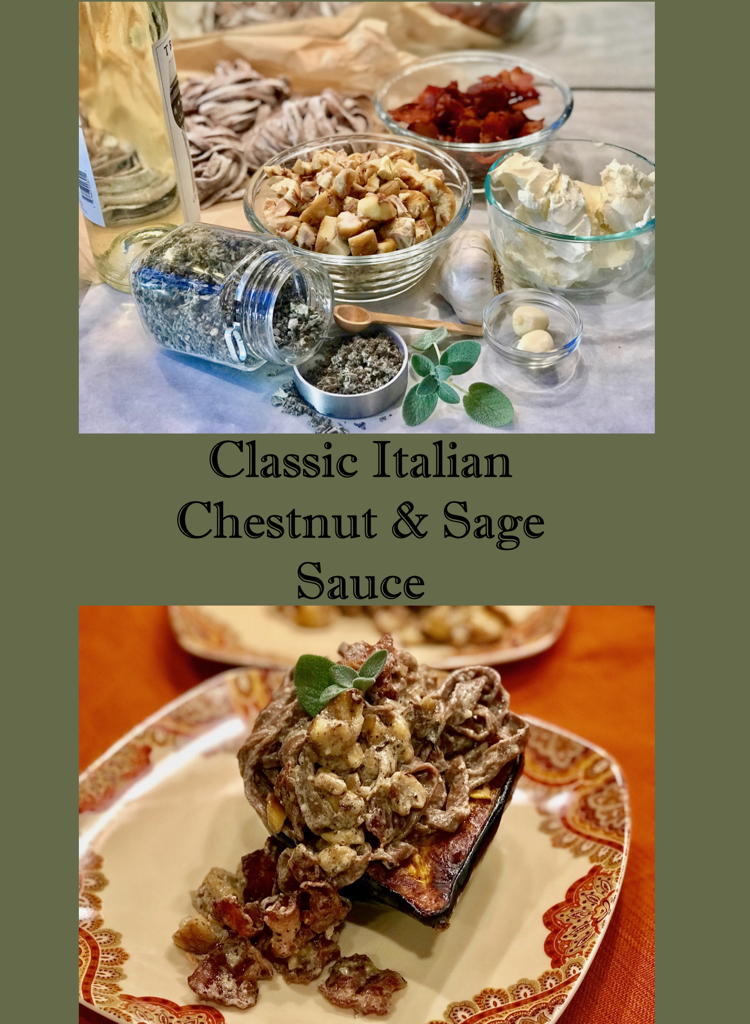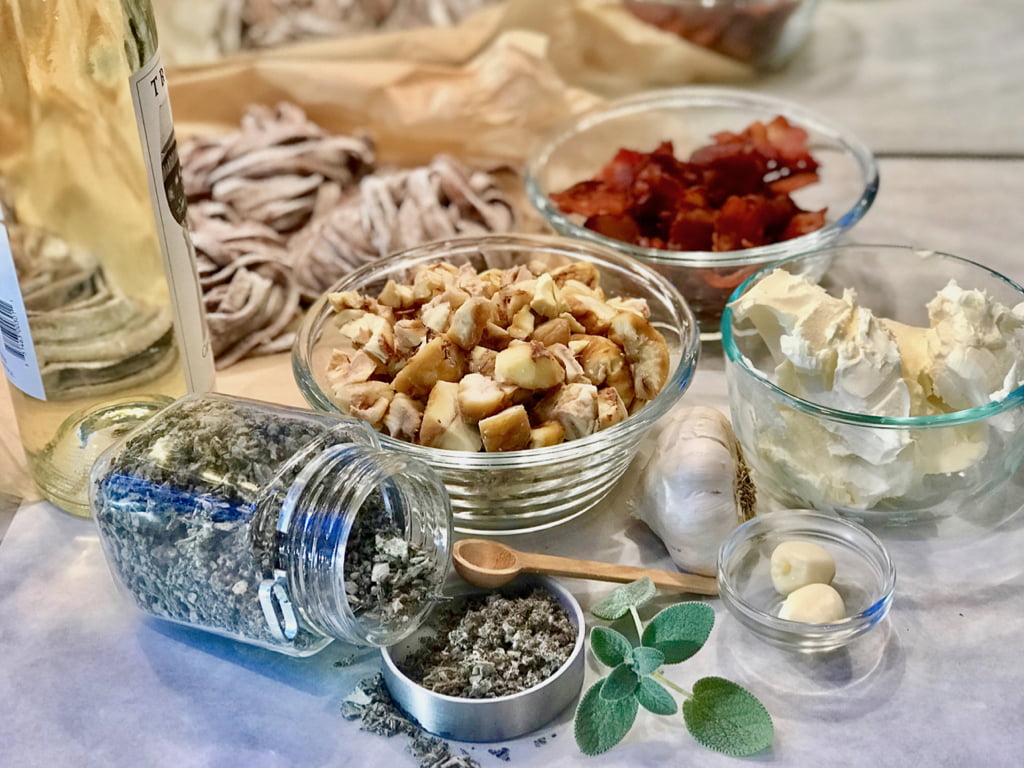Classic Italian Sage Chestnut Sauce is the most vintage Italian sauce Recipe, with chestnuts, pancetta, garlic and white wine, so move over tomato sauce!
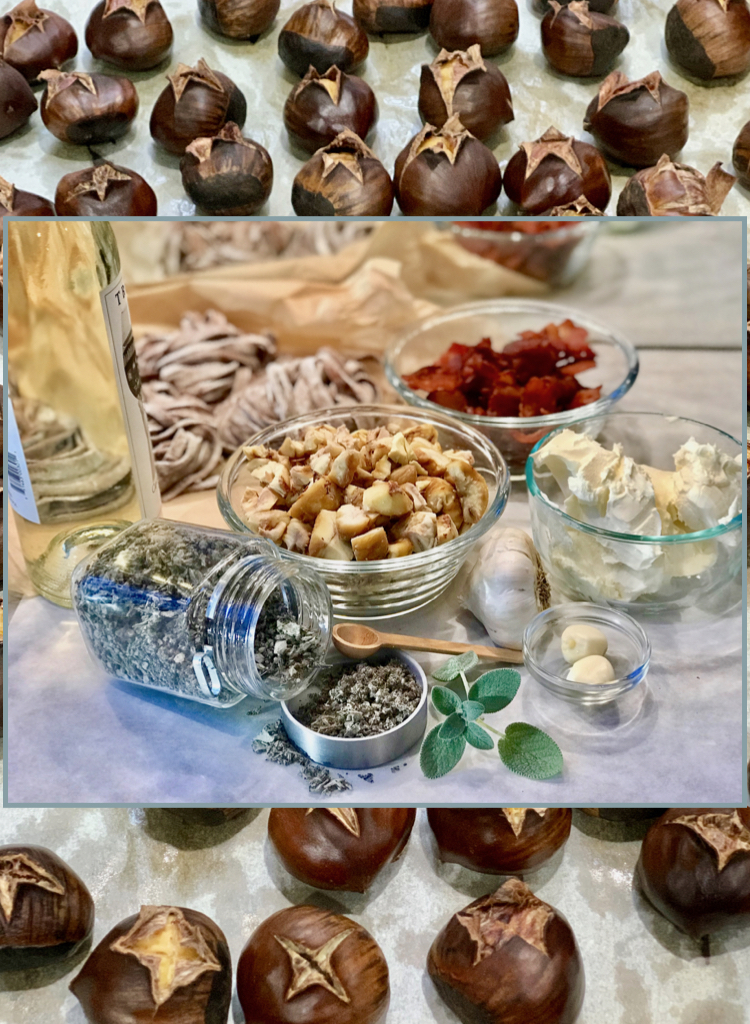
Classic Italian Sage Chestnut Sauce
This classic sauce of brown butter, sage and chestnuts, a drizzle of white wine and a little salty pancetta is perfect for a simple pasta dish or to drizzle over another classic; rabbit!
You will fast discover this sauce to become an Autumn or Winter addition to your pasta, meat or meatless dishes.
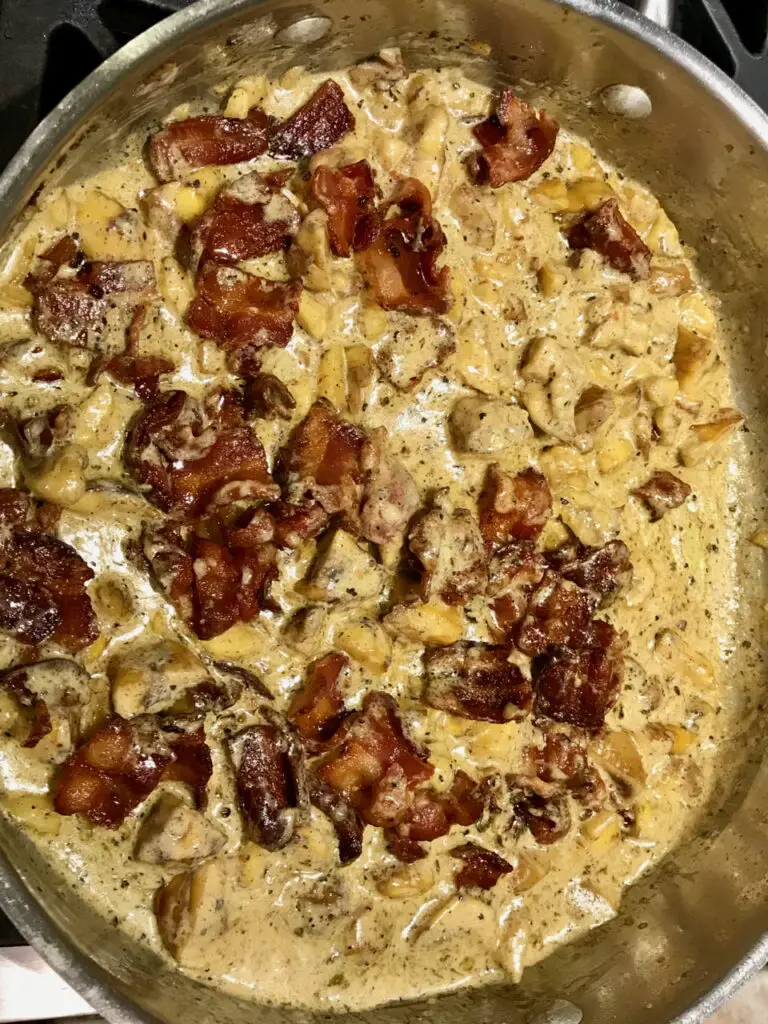
Sage Chestnut Sauce
The first time I experimented with this sauce, it was to go over my Chocolate Chili Pasta. Undoubtedly the flavors paired perfectly with the earthy heat of cacao and chilies.
I decided It was time this sauce carved out it’s own place on my blog for a variety of ways I intend to use it.
Easy To Grow Sage
Growing sage in my garden, has fast become one of my favorite herbs to grow, mostly because it is rarely screaming for my attention and it often remains throughout the winter.
Overall, I find the scent and flavor is beautiful. I have even found leaves still alive in the dead of winter. Many of us know sage for its intense aromatic flavor and scent.
We often think of sage, here in America, with Thanksgiving turkey dishes, something I made in under 90-minutes on PBS The Great American Recipe.
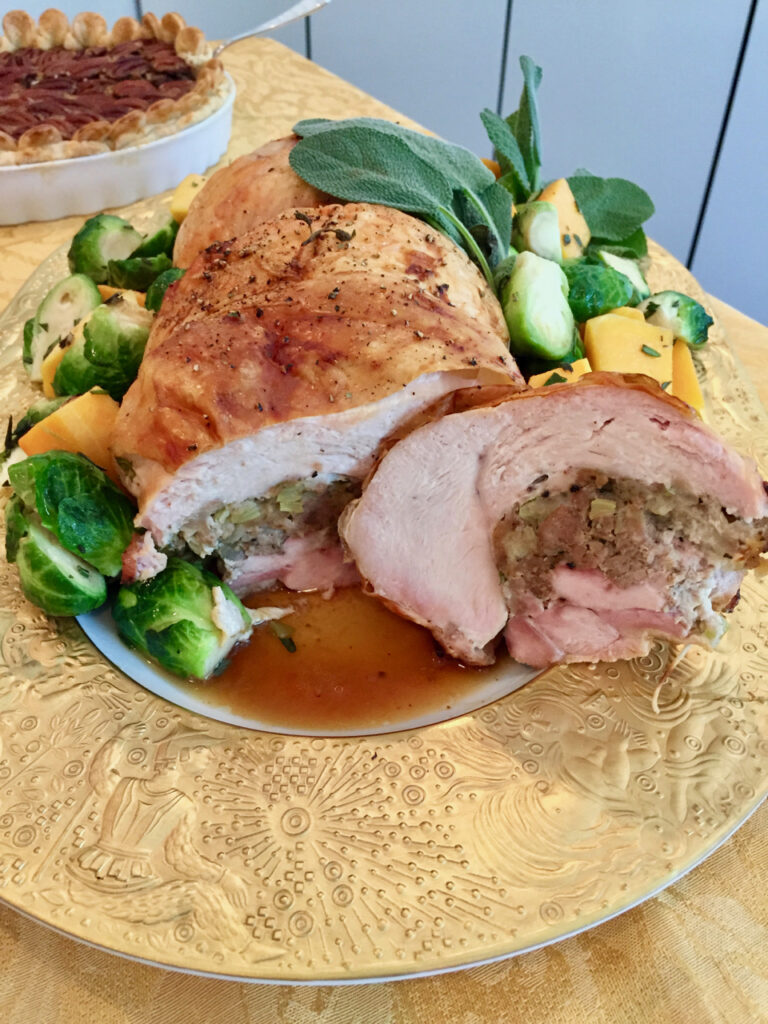
It was a hit with the judges and now my recipe is in their cookbook!
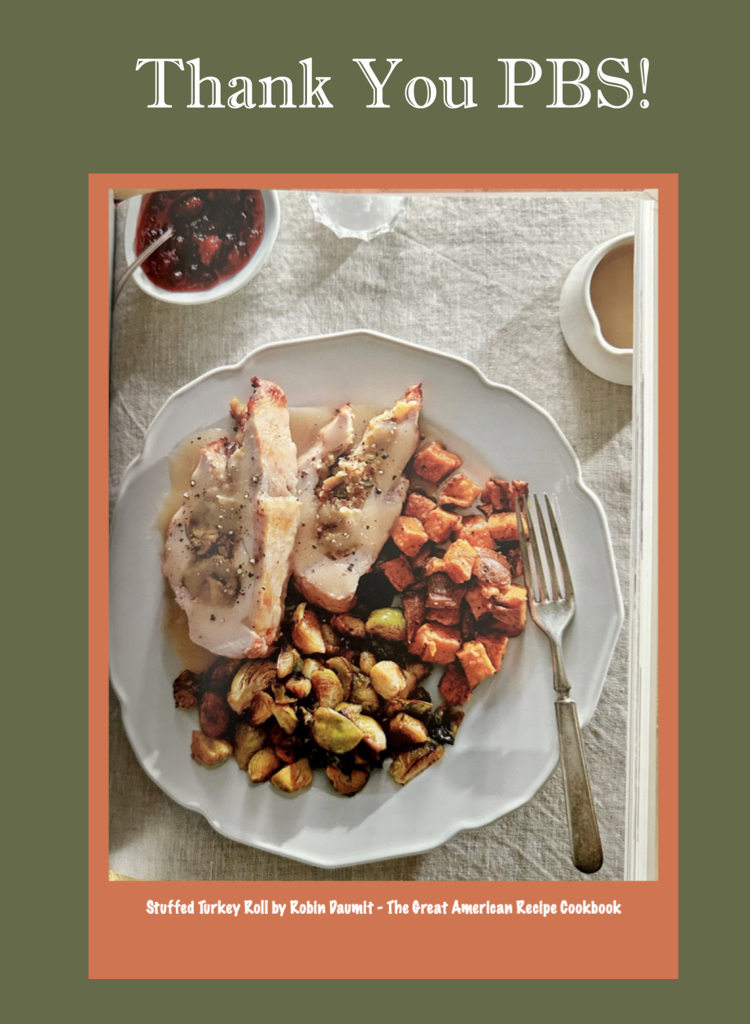
Since Italian cuisine uses sage in so many ways, I thought it was time we Americans discover its beautiful flavor in a versatile sauce.
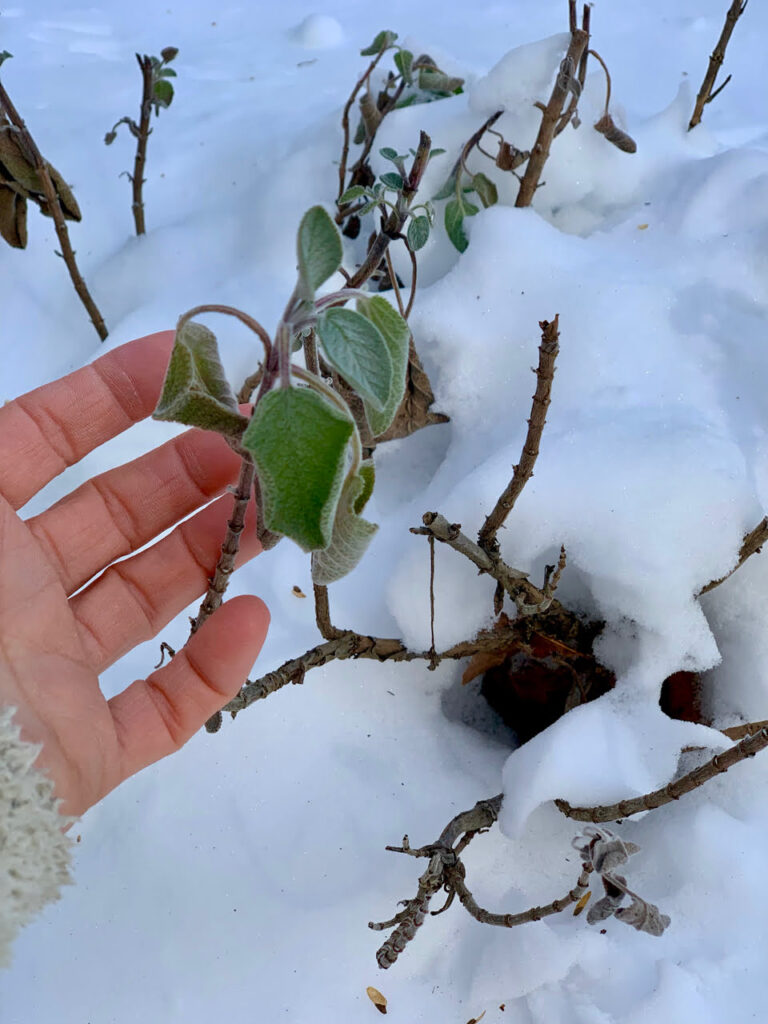
Preparing Sage For Recipes
It might seem a simple thing to do, ‘chop leaves’ when preparing herbs for a recipe.
However, learning a fast and easy technique professional chefs use, makes the job easy, more attractive and exposes the most flavor from inside the herb leaves.
Here you go!
Sage – The Italian Herb We Want All Year
Sage holds a very special place in Italian cooking, and it’s coveted for a mix of flavor and tradition.
Distinctive Flavor
- Sage has a bold, slightly peppery, earthy taste with hints of pine, eucalyptus, and lemon.
- It can stand up to rich foods, especially fatty meats like pork, veal, lamb, and duck, that would overwhelm more delicate herbs.
- When crisped in butter or olive oil, sage releases an aromatic nuttiness that transforms simple dishes into something deeply satisfying.
2. Classic Pairings
- One of Italy’s most famous dishes, Saltimbocca alla Romana, depends on sage. Thin slices of veal are topped with prosciutto and fresh sage, then cooked in wine and butter, the herb’s sharpness cutting through the richness.
- In Tuscany, sage is fried whole in olive oil as a snack or garnish.
- It’s a key flavor in burro e salvia, fresh pasta tossed simply with butter and sage, a dish beloved for its elegance in simplicity.
3. Historical and Medicinal Significance
- The Latin name salvia means “to heal” or “to save.” Italians valued sage for centuries as a medicinal herb, used for digestion, memory, and even spiritual cleansing.
- This healthful reputation carried into cooking, where sage was believed to aid digestion of hearty meats and beans, exactly the kinds of dishes it’s paired with in regional Italian food.
4. Symbol of Restraint in Italian Cuisine
- Italian cooking often celebrates restraint, using just a few high-quality ingredients with intention. Sage is powerful, so only a leaf or two is needed. This aligns perfectly with the Italian philosophy of balance and respect for ingredients.
Chestnuts – The Classic Italian Nut
Who cares what part of Italy you think this sauce comes from, chestnuts, sage, pancetta are used all over Italy, in a variety of recipes.
If it is the season to buy fresh chestnuts in the market, you will need to roast them, and peel them.
I have learned (the hard way), to drop them in boiling water for a minute, then roast them on a baking sheet. They peel easier this way.
Consequently, I now do the same thing with the acorns that drop in my yard, and have made a flour from them and into a delicious cookie!
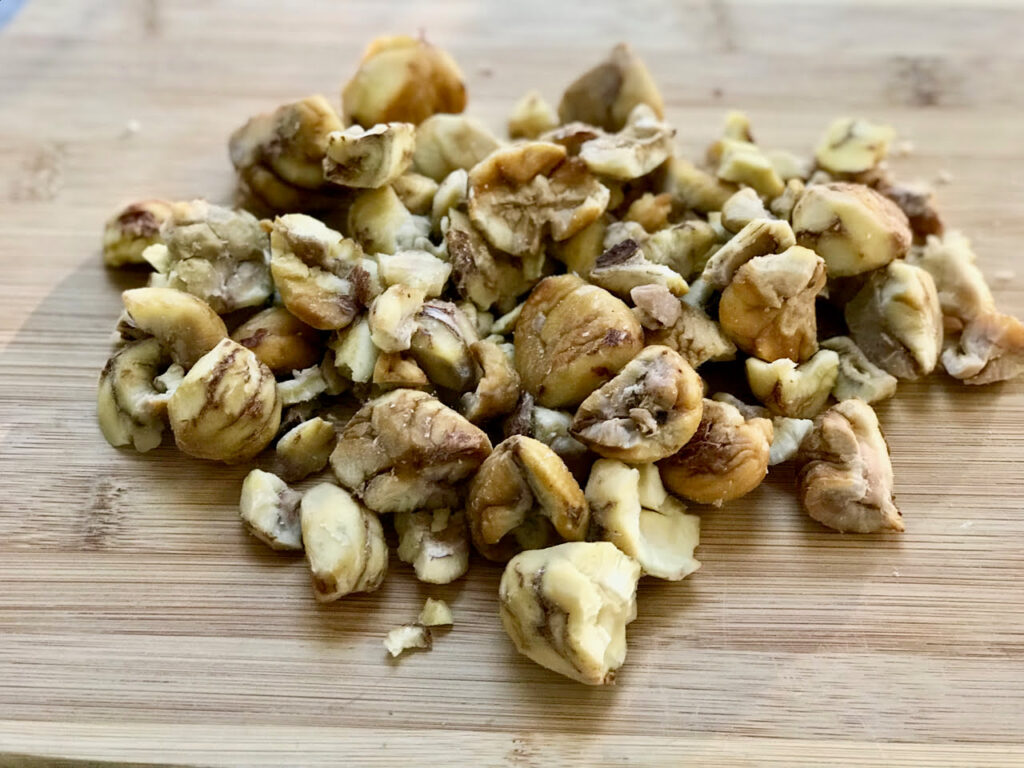
How To Buy Chestnuts
Regardless, chestnuts can be found in gourmet markets, already roasted and peeled. Occasionally I’ve found them in either an airtight pouch or a can, year round.
If buying chestnuts raw, they have a few steps to prepare them for recipes, but so worth the extra work. In fact, I’ve applied the same technique to acorns in my yard of which I make cookies out of.
Creamy Savory Chestnut Sauce
Overall, this sauce comes together in minutes, once the chestnuts are roasted.
Your gourmet dinner will look like you’ve slaved away in the kitchen all day, therefore, you will still have plenty of time to get all dolled up without breaking a sweat when it’s time to finalize your dish!
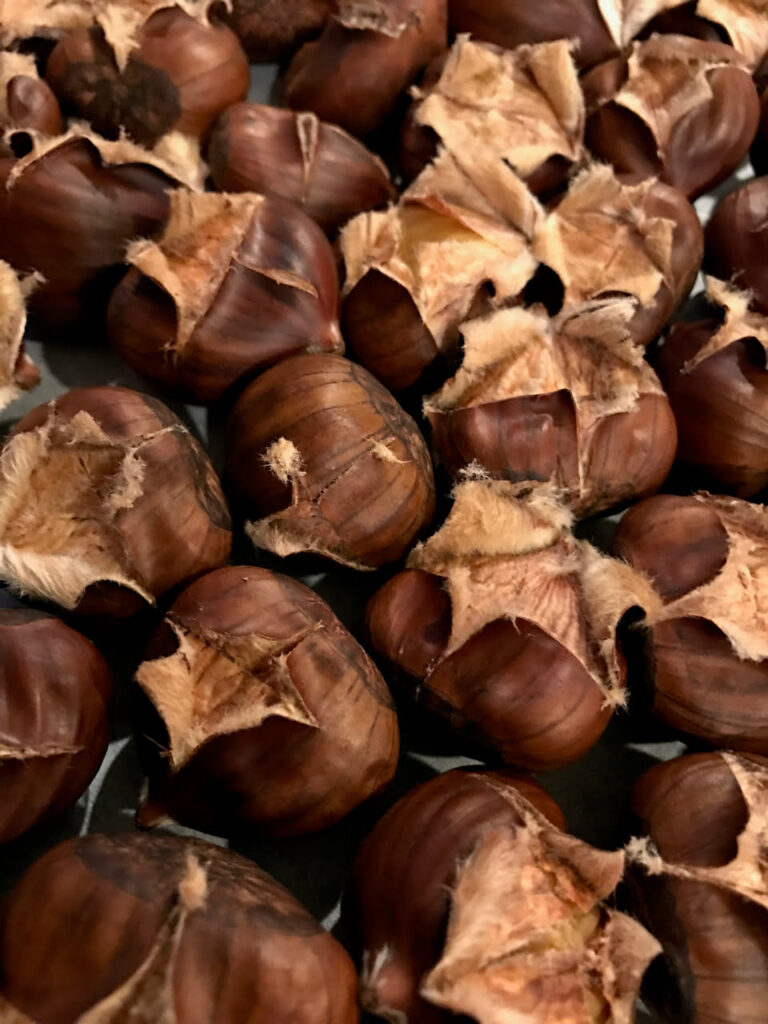
What To Serve With Sage Chestnut Sauce
Since this sauce would be perfect to serve with leftover chicken or turkey, I thought it an ideal sauce with Roasted Rabbit.
My recipe for Homemade Egg Pasta, stirred into the sauce, once it is prepared, is a traditional Italian way of enjoying this sauce.
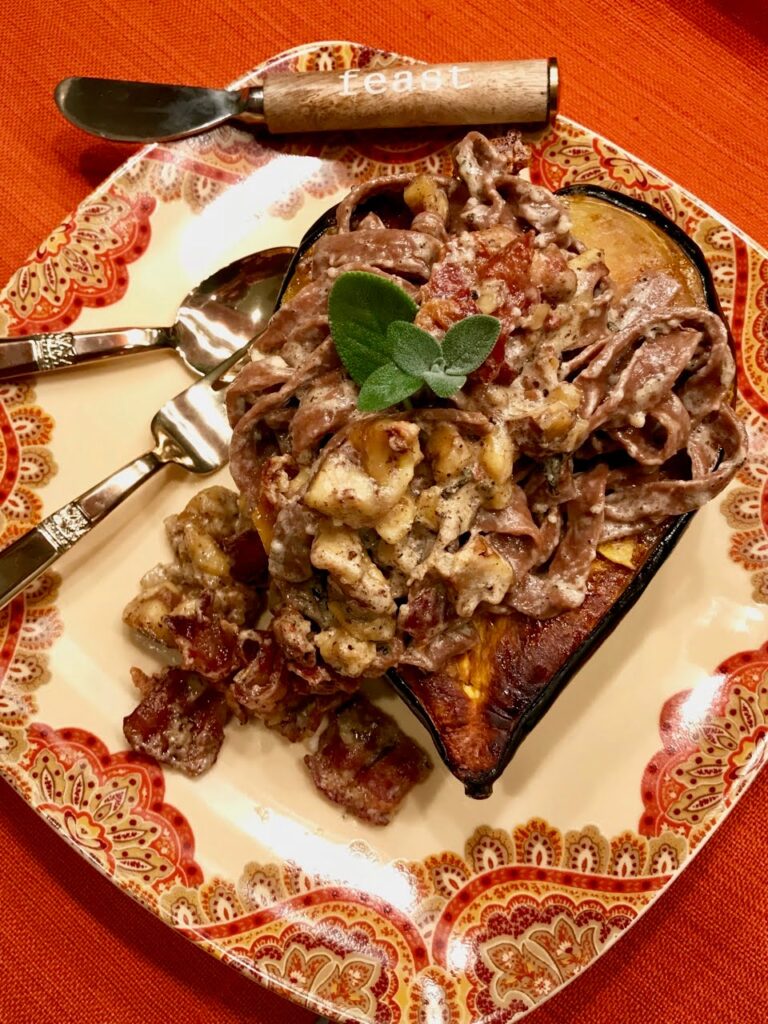
Do you want something more extravagant? Definitely try your hand at making my Chocolate Chili Pasta to serve with it.
It was the first dish I made to pair with this rich and very traditional sauce and I promise that homemade pasta can be so easy to make that I taught my grandchildren to make it.
Equipment Needed
- Cutting board and a sharp chopping knife for chopping the chestnuts to size, and to chiffonade the sage leaves.
- Measuring cup and measuring spoons for more precision.
- Large saute pan in which the entire sauce can be prepared, starting with the pancetta or bacon, leaving some of the oil in the pan for preparing the sauce.
- Slotted spoon, preferably stainless steel for cooking as it allows blending without breaking ingredients.
- Stovetop or burner as the entire dish is prepared stovetop.
Ingredients Needed
- Butter adds richness and silkiness, carrying the other flavors beautifully.
- Garlic, as in most Italian cooking, brings warmth and aromatic depth.
- Mascarpone lends creamy sweetness and luxurious body.
- Half and half lightens the sauce while enhancing its smooth texture.
- Dry white wine balances richness with acidity and a subtle fruity lift.
- Fresh sage is earthy and slightly peppery, it’s the soul of the sauce.
- Pancetta or bacon brings the smoky, salty notes that contrast the chestnut’s sweetness.
- Salt and pepper are essential for sharpening and balancing all flavors.
- Chestnuts – either roasted and peeled at home or already roasted and peeled. These are the nutty, sweet, and hearty star of this sauce, bringing their signature autumn depth.
Other Classic Italian Chestnut Recipes To Love
Once you’ve stocked up on fresh raw chestnuts in the autumn, there are so many recipes I’ll bet you’ve never tasted before.
A classic dessert in Italy, particularly around the Tuscan area, is a torta (cake), made from the chestnut flour.
Having taken the time to roast and peel the chestnuts, only one more step, grinding the chestnuts in a food processor, open the door to so many other sweet chestnut recipes.
Here are just two of my favorites you are bound to love also:
- Classic Italian Chestnut Coffee Torta – a popular Tuscan cake, of chestnuts, cacao, and coffee, laced with a little rum, and chocolate, if you must!
- Salt Caramel Chestnut Cookies – with salt caramel filling and a wild splash of chocolate are not your grandma’s Christmas cookies.
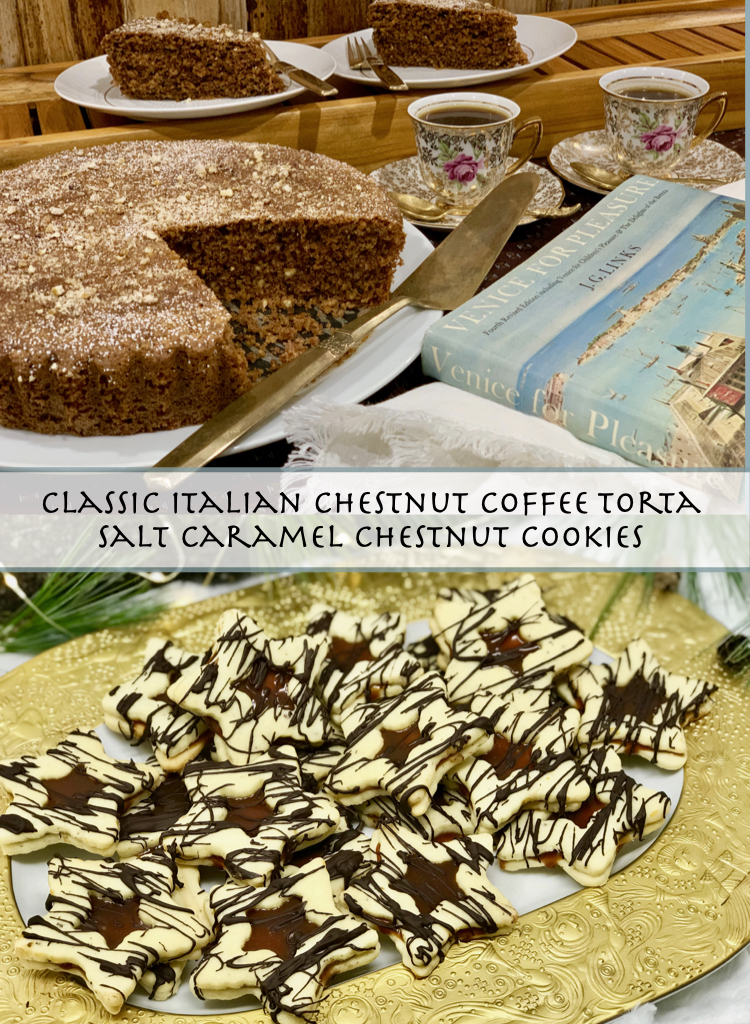
Classic Italian Sage Chestnut Sauce Recipe
Ingredients
- 1 1/2 cups Chestnuts roasted, shelled and cut into quarters
- 2 tbsp Unsalted Butter
- 3 Garlic cloves crushed
- 8 oz Mascarpone or cream cheese
- 3/4 cup Half and Half
- 1/2 cup Dry white wine
- 2 tbsp Fresh sage chopped, some whole for garnish
- 1 cup Pancetta or bacon cooked and crumbled
- Salt and pepper – to taste
Instructions
- In a medium size sauté pan, melt the butter, toss in the garlic and chestnuts. Stir until chestnuts take on a golden color.
- Add the mascarpone, cream, wine, sage and seasoning. Fold gently until the mascarpone melts and the sauce becomes creamy.
- Fold in the pancetta. The sauce is now ready to use as you choose.
